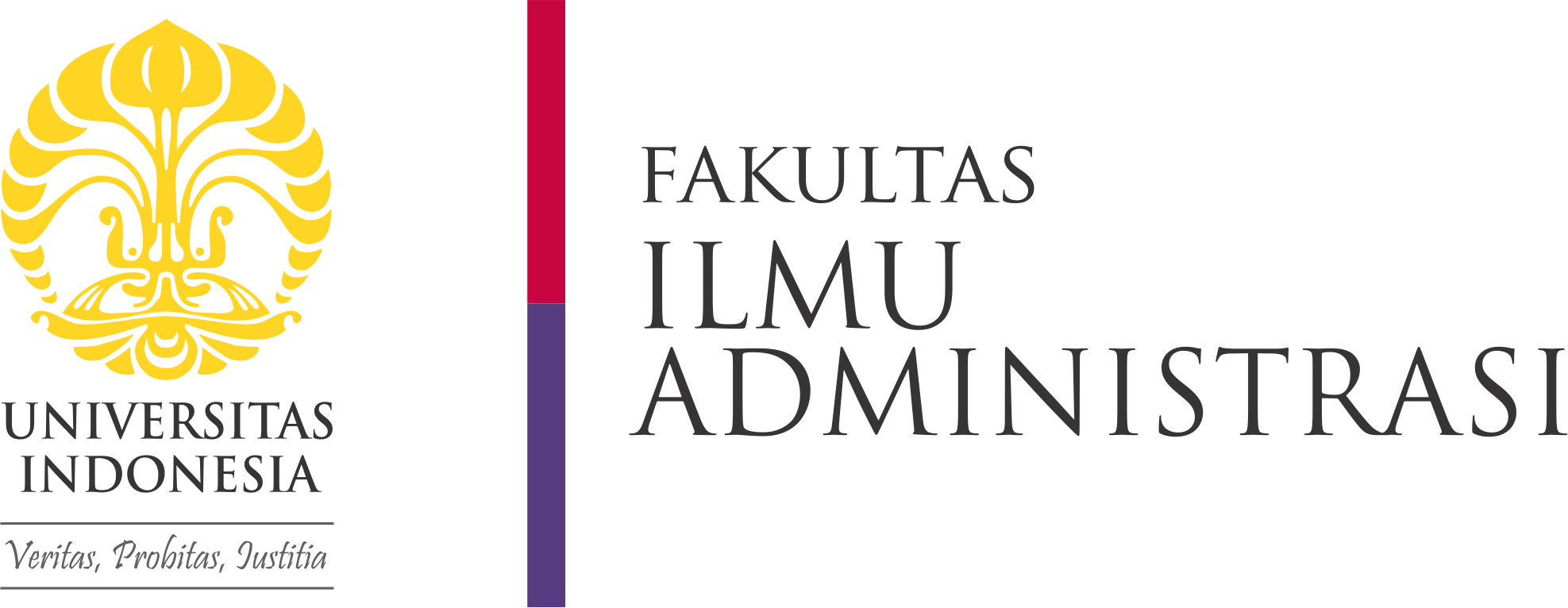Abstract
Through a quantitative approach to data analysis using SEM-PLS, this research aims to identify factors that can improve the performance and growth of the food sector BUMD of DKI Jakarta Province. This research was motivated based on the fact that most BUMDs in Indonesia underperform with various causes. Total respondents were 98 employees from middle to top level management positions in three food BUMDs in DKI Jakarta. The main findings of this research are 12 indicators (inner model) which are divided into five variables in the measurement model (outer model): management, organization, human resources, finance and technology that have a significant relationship and positive effect on all variables. While of the five variables used in the structural model, only financial variable has a significant effect on the performance of BUMD businesses. While the variables of performance improvement of management, organization, human resources and technology do not significantly improve the performance of BUMD businesses. Going forward, companies and the DKI Jakarta Provincial Government can focus on evaluating and improving the growth capital structure and business volume. The company's increased profitability will provide a multiplier effect on increasing the performance and growth of BUMD businesses.
Bahasa Abstract
Melalui pendekatan kuantitatif data analisis menggunakan SEM-PLS, riset ini bertujuan untuk mengetahui faktor yang dapat meningkatkan kinerja dan pertumbuhan BUMD bidang pangan di Provinsi DKI Jakarta. Riset ini dimotivasi karena sebagian besar BUMD di Indonesia berkinerja buruk dengan berbagai penyebab. Total responden berjumlah 98 karyawan dari posisi manajemen level menengah sampai top pada tiga BUMD pangan di DKI Jakarta. Temuan utama riset ini adalah ke- 12 indikator pada model structural yang terbagi dalam lima variabel pada model pengukuran yaitu manajemen, organisasi, sumberdaya manusia, keuangan dan teknologi memiliki hubungan dan berpengaruh positif yang signifikan terhadap seluruh variabel. Sedangkan dari lima variabel yang digunakan pada struktural model, hanya variabel keuangan yang berpengaruh signifikan terhadap kinerja usaha BUMD. Adapun variabel peningkatan kinerja manajemen, organisasi, sumber daya manusia dan teknologi tidak secara signifikan meningkatkan kinerja usaha BUMD. Ke depan, perusahaan dan Pemprov DKI Jakarta dapat fokus mengevaluasi dan improvisasi peningkatkan struktur modal dan volume usaha. Dengan profitabilitas perusahaan yang meningkat maka akan memberikan multiplier efek terhadap meningkatnya kinerja dan pertumbuhan usaha BUMD.
References
Asaari F. 2000. Enhancing BUMD Performance in DKI Jakarta Regional Government: An Analysis of BUMD Privatization and Restructuring through the Development of Holding Companies and Municipal Bonds [thesis]. FISIP. University of Indonesia.
Bhatt PR. 2016. Performance of Government Linked Companies and Private Owned Companies in Malaysia. International Journal of Law and Management 58(2): 150-161.
Budhisulistyawati A, Muryanto YT, Sri A. 2015. The Strategy of Managing a Regionally Owned Enterprise (BUMD) Persero to Realize the Principles of Good Corporate Governance. Jurnal: Privat Law. 3(2):56-66.
Caiden G, Kim K. 1993. Measuring the Performance of State-Owned Enterprises in South Korea. Journal: Asian Journal of Political Science 1(2): 110-143.
Chin WW. 1998. The Partial Least Squares Approach for Structural Equation Modeling. In: Marcoulides GA, editor. Modern Methods for Business Research. New Jersey (US): Lawrence Erlbaum Associates Publishers. p. 295–336.
Chin WW, Newsted PR. 1999. Structural Equation Modeling Analysis with Small Samples using Partial Least Squares. In: Hoyle RH, editor. Statistical Strategies for Small Sample Research. Thousand Oaks, CA (US): SAGE Publications Inc. p. 307–341.
Hai NM, O’Donnell M. 2017. Reforming State-Owned Enterprises in Vietnam: The Contrasting Cases of Vinashin and Viettel. Asian Perspective 42:215–237.
Hair Jr JF, Hult GTM, Rigle CM, Sarstedt M. 2014. A primer on Partial Least Squares Structural Equation Modeling (PLS-SEM). California (US): SAGE Publications, Inc.
Harefa M. 2010. BUMD Management in the Provinces of West Sumatra, West Nusa Tenggara and South Kalimantan. Jurnal Kajian. 15(2):199-226.
Hassard J, Morris J, Sheehan J, Yuxin X. 2010. China's State-Owned Enterprises: Economic Reform and Organizational Restructuring. Journal of Organizational Change Management. 23(5):500 – 516.
Nguyen TV. 2003. Managing Change in Vietnamese State-Owned Enterprises: What is the Best Strategy?. Human Resource Management Review. 13: 423–438.
Liang H, Ren B, Sun SL. 2015. An Anatomy of State Control in the Globalization of State Owned Enterprises. J International Business Study. 46(2):223-240.
Liu K. 2017. Singapore’s Temasek Holdings’ Control Mechanisms and the Performance of the Firms Controlled by Temasek. Asian Economic and Financial Review. 7(2):188-205. doi:10.18488/journal.aefr/2017.7.2/102.2. 188.205.
Muda I. 2017. The Effect of Allocation of Dividend of the Regional Government-Owned Enterprises and the Empowerment Efforts on the Revenue of Regional Government: the Case of Indonesia. European Research Studies Journal. 20(4B):244-259.
Muryanto YT, Djuwityastuti. 2014. Management Model of Regionally-Owned Enterprises (BUMD) in Order to Realize Good Corporate Governance. Jurnal Yustisia. 3(1):125-134.
Nurlaela MS, & Wahyuningsih EM. 2016. The Effect of Good Corporate Governance, CSR, and Company Size on Company Performance. Economica, 4(2), 217–233. https://doi.org/10.22202/economica.v4i2.380.
Okhmatovskiy I. 2010. Performance Implications of Ties to the Government and SOEs: A Political Embeddedness Perspective. Journal of Management Studies 47:1020-1047. doi: 10.1111/j.1467-6486.2009.00881.x.m
Pranoto T. 2017. BUMN Holding Companies: Concepts, Implementation and Benchmarking. Jakarta (ID): Management Institute Faculty of Economics and Business. University of Indonesia.
Putnins TJ. 2015. Economics of State Owned Enterprises. International Journal of Public Administration. 38: 815–832. doi:10.1080/01900692.2014.982289.
Radon J, Thaler J. 2009. Revolving Conflict of Interest in State-Owned Enterprises. Malden (US): Blackwell Publishing Ltd.
Rizal Y. 2007. Strategy to Increase the Value Added of Plantation SOEs through the Establishment of a Holding Company in the Context of Increasing Efficiency [thesis]. Bogor Agriculture Institute. Bogor.
Santosa DB. 2011. Policy on Optimizing the Role of East Java Regional Government Enterprises (BUMD). Jurnal Aplikasi Manajemen. 9(2):525-534.
Seelanatha, L. 2011. Determinants of Firms’ Performance: Some Chinese Evidence. Investment Management and Financial Innovations, 8(3), 28–38.
Septiani NPN, Suaryana IGNA. 2018. Effect of Profitability, Company Size, Asset Structure, Business Risk and Liquidity on Capital Structure. E-jurnal Akuntansi Universitas Udayana. Vol.22.3. Maret (2018): 1682-1710.
Setyawan AIW, Topowijono, Nuzula NF. 2016. Effect of Firm Size, Growth Opportunity, Profitability, Business Risk, Effective Tax Rate, Asset Tangibility, Firm Age and Liquidity on the Company's Capital Structure. Jurnal Administrasi Bisnis Vol. 31.1. Februari (2016): 108-117.
Siswaji B, Nuryantono N, Arifin B, Didu MS. 2013. Analysis of the Influence of Institutions on BUMN Strategy and Performance. Jurnal Manajemen Teknologi. 12(3):220-234.
Sukmana W, Firmansyah I. 2014. Analysis of Performance Problems of Non-financial BUMDs in West Java: Application of the Analytic Network Process Method. Journal & Proceeding Fakultas Ekonomi dan Bisnis Universitas Jenderal Soedirman. 4(1):48-62.
Widjajanti K. 2012. A Study Performance in Regional Government–Owned Enterprises in Indonesia. 48(28):130-133.doi:10.7763/IPEDR.
Wong SCY. 2004. Improving Corporate Governance in SOEs: an Integrated Approach. Corporate Governance International J. 7(2):1-15.
Yu M. 2013. State Ownership and Performance: Empirical Evidence from China Listed Company. China Journal of Accounting Research: 1-13.
Zhao X, Qu H, Huang Y. 2016. The Study on Key Influencing Factors of Mergers and Acquisitions Performance Based on China State-Owned Listed Enterprises. Grey Systems: Theory and Application. 6(1): 41-50.
Recommended Citation
Siahaan, Henry MP; Priyarsono, Dominicus Savio; Rifin, Amzul; and Arifin, Bustanul
(2021)
"Factors Affecting Performance and Growth of Food Sector BUMD Jakarta Province,"
BISNIS & BIROKRASI: Jurnal Ilmu Administrasi dan Organisasi: Vol. 28:
No.
1, Article 3.
DOI: 10.20476/jbb.v28i1.1250
Available at:
https://scholarhub.ui.ac.id/jbb/vol28/iss1/3
Included in
Entrepreneurial and Small Business Operations Commons, Operations and Supply Chain Management Commons, Public Affairs, Public Policy and Public Administration Commons






